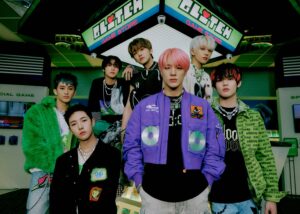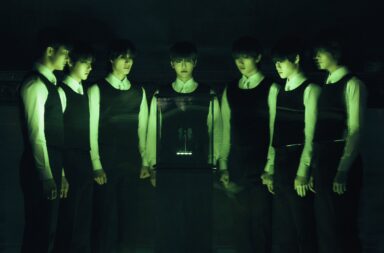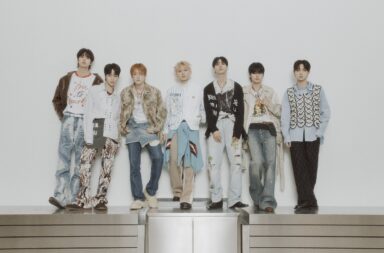
NCT Dream were never supposed to stick around as long as they have. First established as an NCT subunit with a graduation system, each member was to graduate on to another unit once they reached the age of 20, and the cycle was to continue. However, that original concept was later thrown to the wayside, leaving Dream a fixed subunit within the greater NCT ecosystem, and for good reason.
Rather than the members leaving their already established Dream-y sound behind to move onto a new one elsewhere, they have instead evolved right before our eyes, together, since the release of their debut song, “Chewing Gum.” Between then and now, with the release of their second full-length album, Glitch Mode, NCT Dream have grown into a more mature but still very much youthful and unmistakably NCT sound that has never left the original promise and concept of the group behind.

Glitch Mode puts their growth and maturity into perspective, while still subverting expectations. Taken as a whole and compared to their last mini album, Hot Sauce, Glitch Mode sounds much more NCT-like than any previous album of theirs. It is a stark departure from the youthful, earnest sound of Hot Sauce, but this aspect isn’t entirely unexpected, as the Dream members have found themselves more and more incorporated into the overall NCT U fold in recent years. On top of that, Mark and Haechan have found themselves working double duty as members of NCT 127, perhaps the leader group in defining the signature NCT sound.
Compared to Hot Sauce and previous releases, Glitch Mode is even more sonically cohesive than anything the group has put out in the past. While this is certainly one of the album’s greatest strengths, at times, it is also one of its biggest weaknesses. Listening to the album from start to finish is easy and smooth thanks to the throughline of electronic synths and video game-inspired sound effects that stick to the theme of Glitch Mode well, but it leaves a greater opportunity for several songs to get lost in the cohesion.
The album expectedly starts off strong with two upbeat, energetic songs that do a solid job of standing out on their own, while leaning more toward NCT than NCT Dream. “Fire Alarm,” a blaring, upbeat track, basks in its business and emulates the clanging and ear-perking NCT sound to a tee. In a similar vein, “Glitch Mode,” the album’s title track, is bustling at times to the point of near-confusion, but surprisingly handles the twists and turns of any dynamic NCT title track well without becoming overly hectic. As the track bounces back and forth between several different, at times clashing elements and a heavy layer of video game-inspired and motor-like sound effects, the members’ vocals stay constantly hypnotic and addictive, making it an easy track to return to after a few listens.
“Arcade” and “Saturday Drip” are two lively, memorable tracks in their own respects too. “Arcade” leans rap-heavy, but the members balance their vocal deliveries with a mix of power and sweetness that refer back to their youthful energy and persona. On the other hand, “Saturday Drip” gives off the vibe of a matured, but still lively Dream, as Mark, Jeno, and Jaemin especially utilize their lower rapping registers to deliver an audacious, addictive song to celebrate the weekend.
Some of NCT Dream’s best work also lies in their more low-key, R&B-inspired tracks, and this album hardly falls short on delivering on that front too. “Teddy Bear” and “It’s Yours” take the cake here, leaning so low-key compared to much of the rest of the album that it is nearly impossible to forget them. “Teddy Bear” is a standout in this respect, subverting NCT Dream’s often boisterous, lively sound with one resigned to almost a whisper. Jisung‘s deep, buttery vocals are eye-catching as he takes turns singing the lines of the verses with Renjun. The group’s hushed harmonies during the chorus are particularly mesmerizing, showcasing how well their vocals fit together and their ability to traverse genres.

But where the album gets too low-key and too cohesive is where it falls somewhat flat. Tracks like “Rewind” and “Replay” are strong on their own, but when considered along with the rest of the album, they tend to get lost. This is no blaring fault, but at times, the members’ vocals blend so seamlessly with the repeatedly-used electronic synths, that it becomes difficult to differentiate tracks like these from others after listening to the album all the way through.
There are also a few tracks that are near-continuations of the sounds of Hot Sauce and Hello Future, but these tunes blend seamlessly into the particularly cohesive sonic landscape of Glitch Mode. Such tracks include “Drive,” a track very true to its name, car beeping sounds included, as well as “Never Goodbye,” a nostalgic number reminiscent of summer at dusk. Although not as memorable as the first few tracks on the album, they bridge the gap between current and past eras, balancing NCT Dream’s youthful energy with their ever-growing maturity.

The album overall straddles both of these identities of NCT Dream well: their youth and their maturity. Both are the reasons for their permanent fixture as a unit, and thus their success. With Glitch Mode, NCT Dream’s unique position within the NCT ecosystem continues to set them apart from their musical counterparts, still ensuring that they have the perfect, magical mixture of their original premise and steady growth.
(YouTube. Images via SM Entertainment.)


